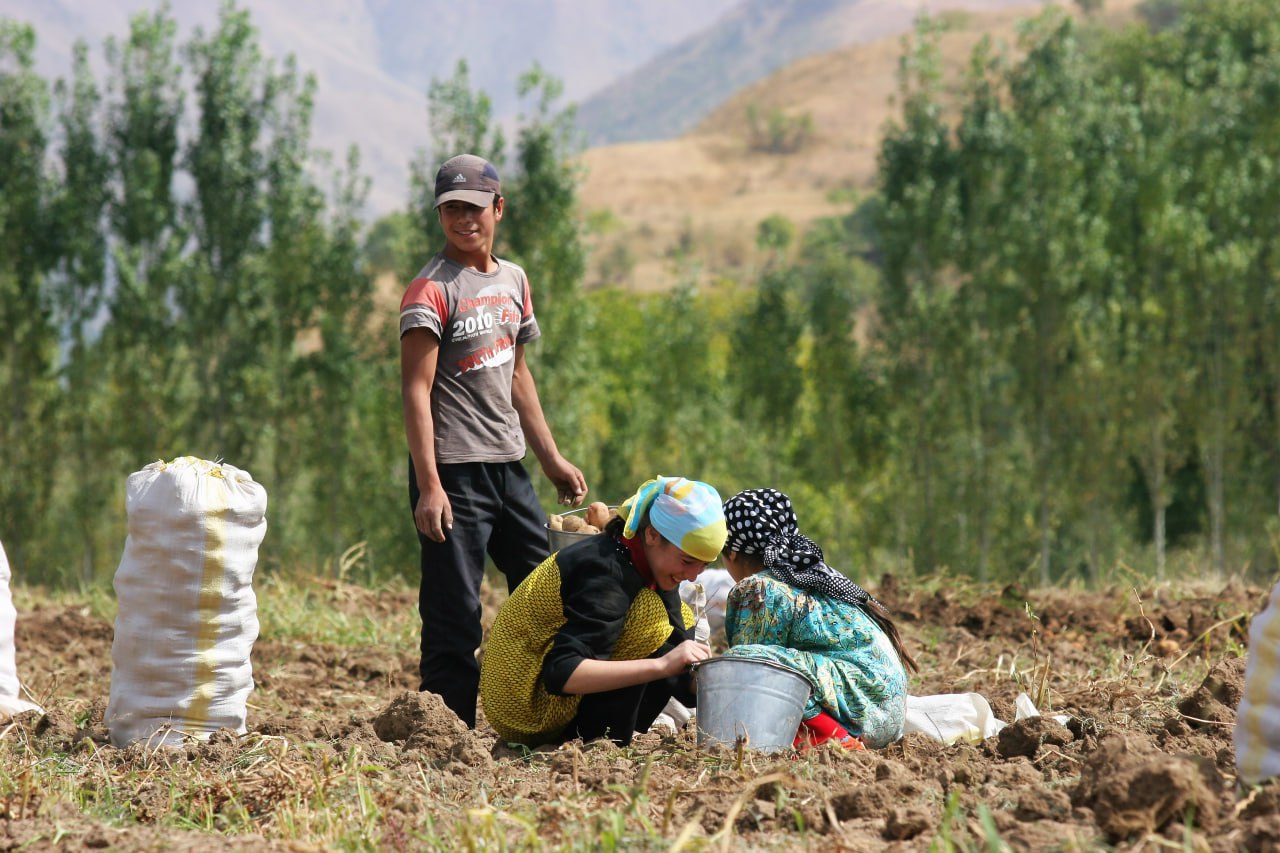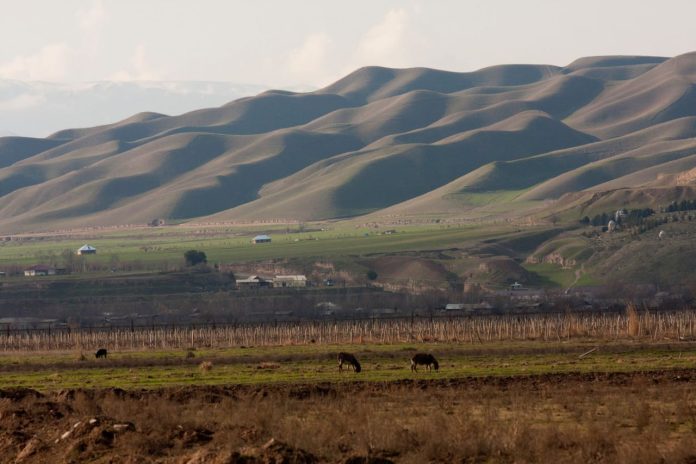The impact of climate change in Tajikistan is visible in many areas of life. Between 1992 and 2016, natural disasters affected more than 80% of Tajikistan’s population and caused economic losses of US$1.8 billion. The impact of climate change is particularly severe in agriculture, with extreme weather events exacerbating the problems of rural residents.
Growing crops is becoming more difficult
Farmer Bakhodur Khaitov says that this year, due to abnormal winter cold, most of the grape trees died, and in the summer, intense heat damaged the tomato, cucumber and rice crops.
“I used to get 7-8 tons of rice from 1 hectare of land, but in the last two years the yield has decreased to 5 tons,” says the farmer.
According to him, the most vulnerable to climate change crops were tomatoes, cucumbers, potatoes, peppers, cabbage and others.
“Traditionally, we grew these crops during the summer and sold the fresh harvest at the beginning of autumn. The population usually prepared vegetables at this time and they were very cheap at the markets. Since 2019, due to the heat, it is impossible to grow them in the summer,” the farmer says.

In September, late watermelons grown on dry lands in Tajikistan used to come to the market. They were not very big, but they were very tasty and sweet. But for the third year now, they have not been able to be grown.
Mumin Safarov has been growing such watermelons for many years, but this year his entire harvest dried up.
“Because of the heat, the moisture has gone deep into the soil, the agricultural technology for growing dryland watermelons is not complicated, but, as you can see, there is no harvest,” he says.
According to the producers, Tajikistan is not taking measures to adapt agriculture to the new conditions. It is too dry and hot during the day, and in August the fields are already cool, dew falls in the mornings, which can be fatal for cucumbers. As the sun comes out, the dew burns the leaves when it evaporates, causes various diseases, attracts pests, and as a result, the harvest will be small, and it does not cover the producers’ expenses.
Therefore, in recent years, farmers have been growing them mainly under film and early, so that by August the harvest is already over.
As noted by Doctor of Agricultural Sciences Kurbonali Partoev, climate change can increase the need for irrigation, accelerate land degradation, increase crop losses and cause damage due to harmful insects, pathogens, fungi and weeds.
In addition, climate change-induced extreme weather events and heatstroke may increase morbidity and mortality in livestock production.
Agricultural experts have noticed that plants in extreme heat and dry climates are running out of breath and do not have time to absorb carbon dioxide, meaning that the process of photosynthesis in plants has slowed down. According to them, the air is becoming drier, which leads to increased evaporation of water from plant leaves. This is becoming one of the causes of global warming.

The temperature is rising…
At the conference “Water for Sustainable Development 2018-2028”, the President of Tajikistan Emomali Rahmon noted that “long-term observations indicate an increasing impact of climate change on the environment and socio-economic situation in Tajikistan and Central Asia.
“According to these observations, over the past sixty years the average annual air temperature in Tajikistan has increased by one degree Celsius, and the frequency and intensity of natural hydrometeorological phenomena have increased,” he said.
According to forecasts by experts from the Asian Development Bank (ADB), there is a high probability that temperatures in Tajikistan will increasingly exceed 40°C, especially in lowland areas. This will increase the negative impact on human health.
Temperature increases in Tajikistan are projected to be significantly higher than the global average. By 2090, warming could reach 5.5°C compared to 1986–2005.
What should be done?
According to ADB experts, without necessary adaptation efforts and disaster risk reduction, the impacts of climate change, especially heat and drought, could lead to serious losses and damage in Tajikistan.
In agriculture, adaptation priorities should focus on diversifying livelihoods, developing efficient and climate-resilient water and land use, among other things.
A critical adaptation solution for Tajikistan is tree planting or reforestation.
“Trees, especially deciduous trees, produce oxygen and purify the air, regulate air temperature, improve health, nourish and stabilize soil, retain water, and control flooding. Plus the obvious benefits of food, fuel, and beauty,” said Shanny Campbell, ADB Country Director for Tajikistan.
ADB takes on the problem
The Asian Development Bank takes climate change seriously. ADB works with governments and other partners to mobilize climate finance and deploy best practices.
ADB recently announced the establishment of the Asia-Pacific Innovative Climate Finance Facility (APIF), a “landmark program that can scale up support for the region’s fight against climate change.”
According to the ADB, a number of grants are currently under discussion to develop projects to combat the effects of climate change and adapt to them.
Using the $1 in, $5 out model, initial plans to secure $3 billion in guarantees could unlock $15 billion in new finance for much-needed climate projects in the Asia-Pacific region.
ADB officials say financing through the IMF-AP will help achieve the institution’s goal of providing $100 billion of its own resources to combat climate change by 2030, including $34 billion in climate adaptation financing, supporting the Asia-Pacific region in building resilience.






